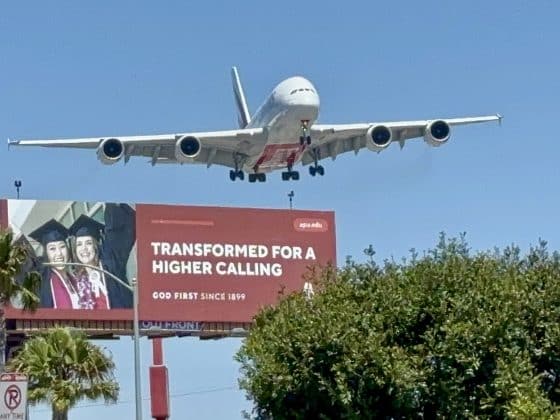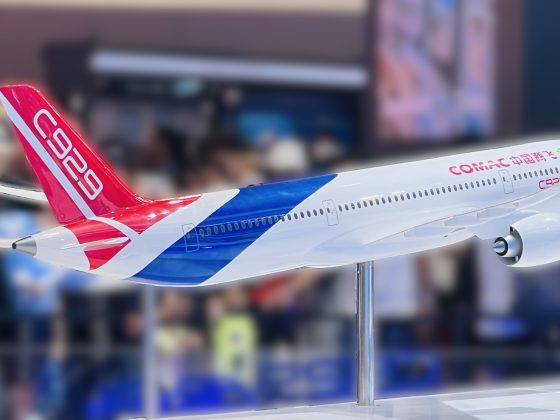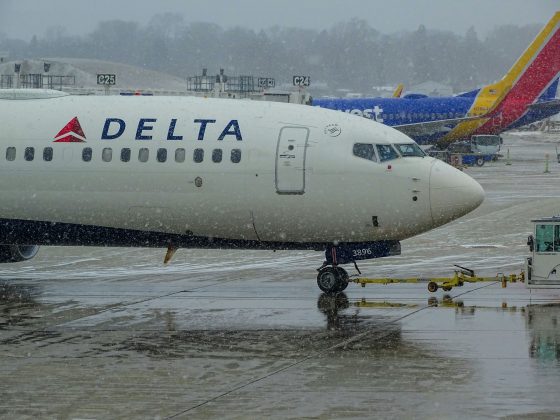On January 10, 1990, the McDonnellDouglas MD-11 took to the skies for the very first time over Long Beach, California. Like most first flights, it was a moment to celebrate the work and accomplishments of engineers and factory workers. Yet the launch was far from ideal. The joy of a first flight would be short lived.
MD-11 falls short of performance and sales targets
The MD-11 was designed to be the next-generation of the relatively successful DC-10 family. The DC-10 itself had a rough start with the crash of American 191 at O’Hare and subsequent grounding for months. Over time though, the DC-10 became the back bone of international trunk routes for airlines like United, Continental, and American. The hope was that McDonnell Douglas could replicate that success with a larger version that had enough range to fly transpacific with significant cargo.
The company eventually settled on a 18 ft 7inch stretch of the DC-10-30 fuselage with an expected range of 6,800 NM. The type officially launched in 1986 with 10 airlines most notably including Federal Express, Korean Air, and SwissAir. Marquee customers like Singapore Airlines, Delta Air Lines and American Airlines later signed up with firm commitments. The first delivery of the jet was made to Finnair on Dec 7, 1990.
At the time, McDonnell Douglas was short on cash. The MD-11 was originally intended to be a significant step forward for the industry, but limited cash for development meant that compromises had to be made. For one, McDonnell Douglas had relatively limited subscale testing investments during development. It meant that an issue with adverse airflow around the pressure pylons wasn’t discovered until a research project with NASA after launch of the type.

At launch, the MD-11 fell significantly short of performance targets and guarantees to the airlines. Range and fuel burn numbers were so disappointing that Singapore Airlines cancelled their order even before any delivery was made. Sales were sluggish too.
American Balked At the Poor MD-11 Performance too
American Airlines originally had 50 MD-11s on order. The aircraft was supposed to both augment the DC-10 and take up the bulk of international flight as the airline expanded its hubs at San Jose and Los Angeles, California. American also wanted to utilize the jet to fly nonstop from DFW to Tokyo.
Unfortunately, the CEO at the time Robert Crandall was “very unhappy” with the performance of the jet. In an Los Angeles Times article from 1991, the Airline disclosed that the jet fell 6% short of fuel consumption targets along with a host of mechanical issues. McDonnell Douglas made improvements shaving off 2%. Still, that meant that American’s newly launched route from Tokyo to San Jose, California required either a fuel stop or load restrictions depending on the weather conditions.
American worked out many of the operational kinks eventually but ended up crafting a deal with FedEx to offload their MD-11s to the cargo airline. American only accepted 19 aircraft in total. By 1999, the MD-11 fleet was retired at American Airlines.
MD-11 Takes Second Fiddle
After a number of performance improvement packages, McDonnell Douglas eventually fixed many of the original issues that plagued the MD-11. But by 1995, Boeing had wooed the market with a competing 777 jet that could outperform the MD-11 with one less engine. MD-11 sales stalled, leading to a total of only 200 aircraft built and sold.
As major airlines offloaded the MD-11, the aircraft found a niche with a few second-tier charter airlines like World Airways. Most passenger MD-11s were either retired early for parts or converted to cargo aircraft. KLM retired their last MD-11 passenger carrying aircraft in 2014, bringing an end to passenger MD-11 operations.

As of January 2020, around 115 cargo MD-11s fly the skies. Most fly with FedEx and UPS. Many MD-11s are scheduled to be retired within the next few years at major cargo operators like Lufthansa. FedEx is also reducing their dependence on the type.
McDonnell Douglas eventually merged with Boeing bringing an end to any possible further development of the discussed MD-11X or the fanciful MD-12 double decker that resembled the eventual A380. Many analysts expressed that their poor returns on commercial aircraft led to the merger with Boeing. While that analysis is up for debate, a subpar refresh of the DC-10 certainly didn’t help matters.
As we celebrate the beginning of the MD-11’s fourth and most likely last decade of service, check out this video of a beautiful FedEx MD-11 departure filmed by YouTube user BostonAirborne.









